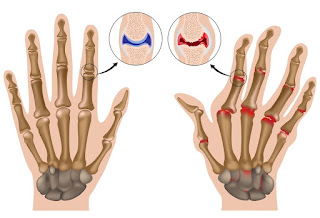Seeing one’s little bundle of joy right before his own eyes for the very first time is perhaps one of the best feelings a person could have in his entire life. Those jerky little hands and feet; the cute, occasional yawns and quasi-smiles – all give the heart a tiny giddy jump every single time.

Therefore, it is only but understandable that when certain things seem to go beyond what’s normal, healthy, and acceptable, parents tend to panic for their child. Unfortunately, there are some cases wherein newborns do come out with some sort of deformity or disease even when the mother could swear that she ate, drank, and lived healthy throughout her pregnancy. It sure can be negatively shocking and panic-inducing for many parents, but staying calm and sensible is key in making wise and effective decisions.
Congenital orthopedic conditions are among the more common of the bunch. They are also quite easy to detect as any deformity will sooner or later manifest in the baby. Nevertheless, there is no need to be extremely alarmed and scared as there are now a number of up-to-date and effective treatment options for many orthopedic conditions.
The following are examples of congenital orthopedic disorders:
Metatarsus Adductus (metatarsus varus)
This is a condition noted in infants wherein the toes are pointed towards the midline of the body. It has no known cause, is non-fatal, and does not necessitate treatment in most cases. Infants born with this disorder, however, have higher potential for development dysplasia of the hip later in life. Treatment usually varies from stretching or manipulation exercises, cast, and surgery.
Clubfoot (talipes equinovarus)
Here, either or both of the feet may have a wider and shorter appearance in which the heels are pointing downward, with the fore part of the affected foot angled towards the mid-line. It is said to occur twice as often in males than in females, and is caused by a number of hereditary and environmental factors. If clubfoot is apparent in a newborn, an x-ray test along with the orthopedist’s recommendation will confirm the condition. Nonsurgical treatments such as casting, physical manipulation, PT, and taping are available. Surgical intervention may also be an option where nonsurgical methods fail.
Developmental Dysplasia of the Hip
This condition is characterized by the partial or full slipping out of the leg’s ball end from the hip’s socket. It occurs more often in female newborns having a close family history of the disease. Those who have it will likely have a shorter leg or uneven skin folds on the buttocks on the same side of the affected hip. Treatment options include the nonsurgical installation of a Pavlik harness, casting, and surgery.
The aforementioned are just three of the many congenital orthopedic conditions that are known today. If you suspect your precious little one might be suffering from any of these, it is best to consult a highly credible orthopedic specialist so that appropriate and relevant actions can be taken. After all, who doesn’t want only the best for their children?
This article was written by Cedric Loiselle. If you are looking to seek the services by the creme of the crop Milwaukee orthopedic specialists, read his articles for valuable tips and advice.
No comments:
Post a Comment